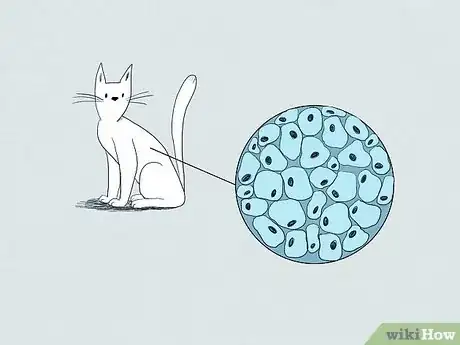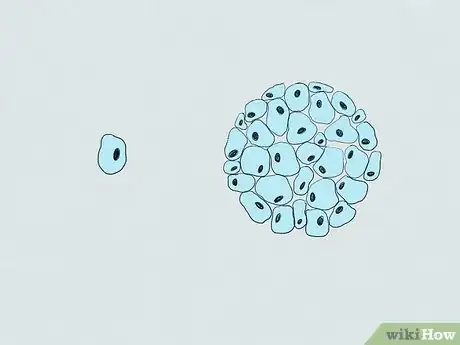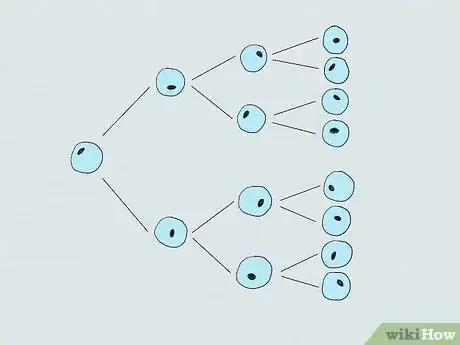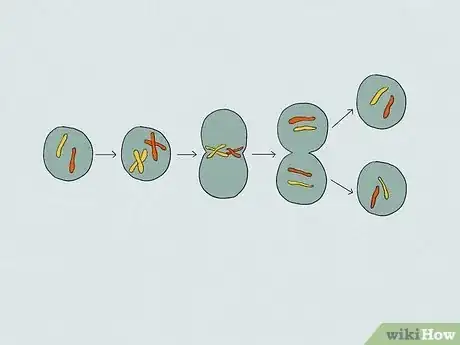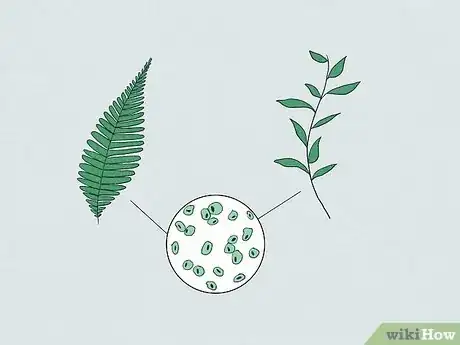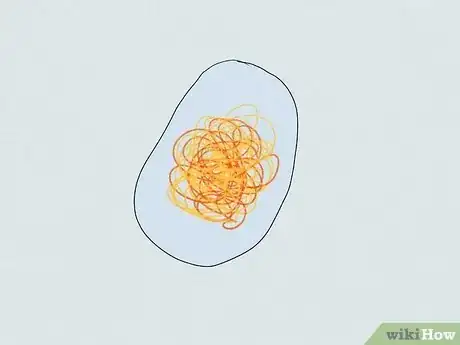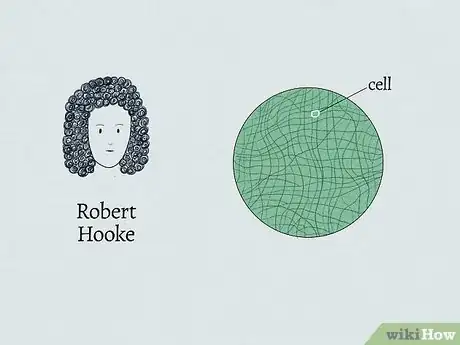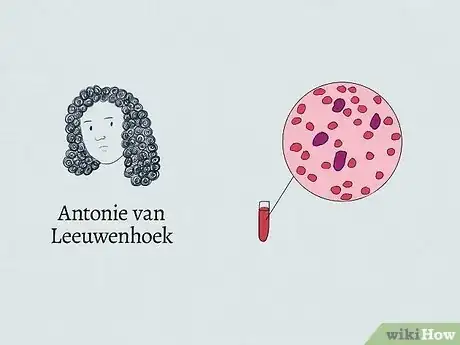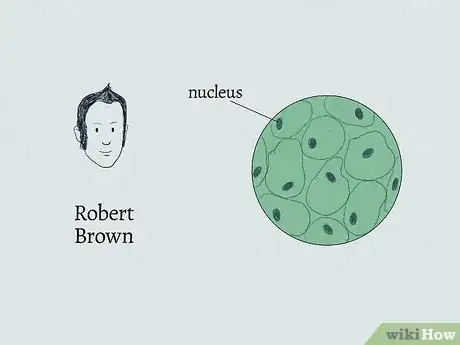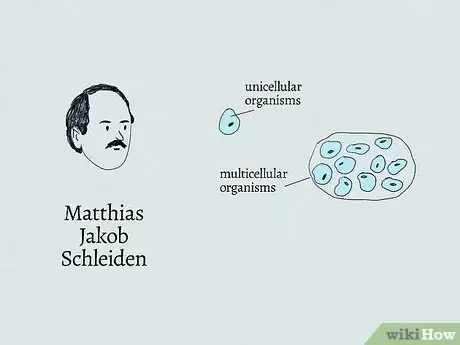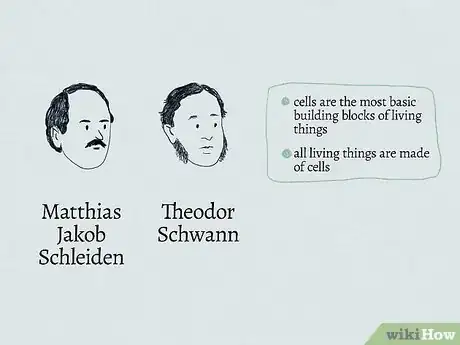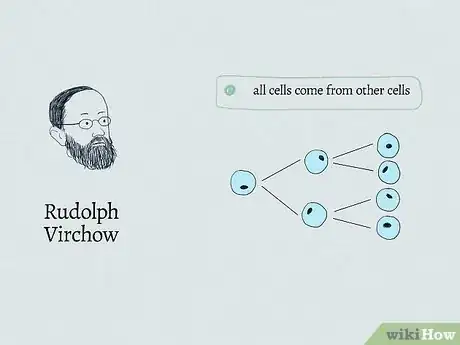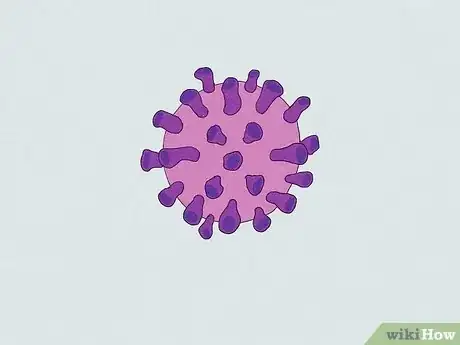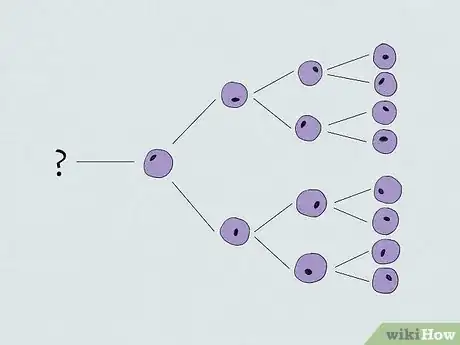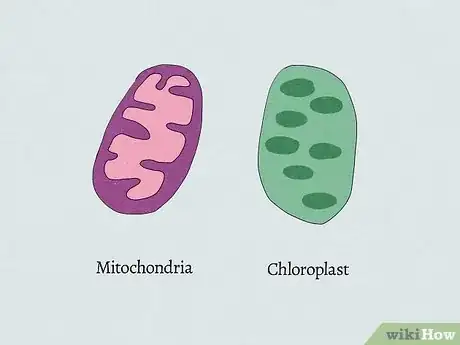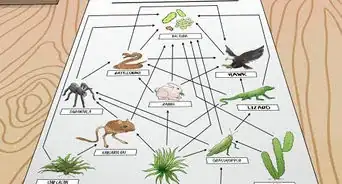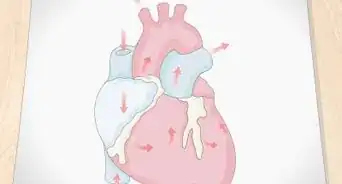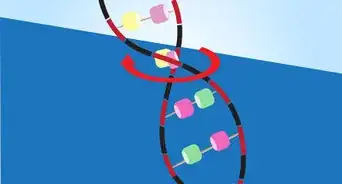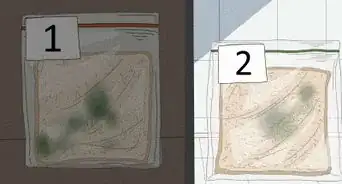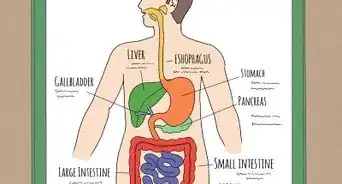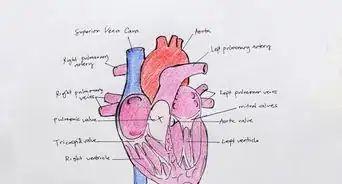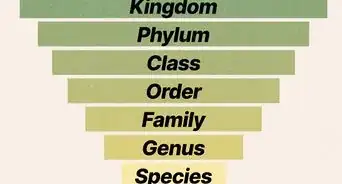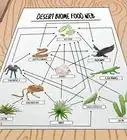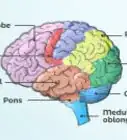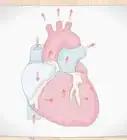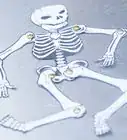This article was co-authored by wikiHow staff writer, Luke Smith, MFA. Luke Smith is a wikiHow Staff Writer. He's worked for literary agents, publishing houses, and with many authors, and his writing has been featured in a number of literary magazines. Now, Luke writes for the content team at wikiHow and hopes to help readers expand both their skillsets and the bounds of their curiosity. Luke earned his MFA from the University of Montana.
There are 8 references cited in this article, which can be found at the bottom of the page.
This article has been viewed 3,645 times.
Learn more...
We’ve come a long way in our understanding of how life works, and the development of cell theory was a huge step forward in that understanding. It took a number of scientists many years to figure out what we know today… but what do we know? Our simple cell theory primer will catch you up to speed with easy explanations on the 3 main points of classic cell theory, the 3 main points of modern cell theory, and the history of how scientists discovered all of it.
Things You Should Know
- The 3 parts of classic cell theory are: cells are the most basic building blocks of all living things, every living thing is made up of cells, and cells come from other cells.
- The 3 parts of modern cell theory are: cells pass DNA to new cells, cells of the same species are made of the same stuff, and energy flow happens inside cells.
- Biologists Schleiden and Schwann first proposed classic cell theory in 1839, and Virchow added to it in 1858.
- As microscope technology and our understanding of living things advanced, classic cell theory changed and advanced into modern cell theory.
Steps
The 3 Pillars of Cell Theory
-
1Cells are the fundamental building blocks of all living organisms. This means that cells are the most basic unit of every living thing.[1] An organism might have many different parts, but if you use a microscope to zoom in close enough, all those parts are made up of individual cells.
-
2Every living organism is made up of one or more cells. If you put any organism under a microscope, you’d find it’s made up of cells, the same way a house might be made up of bricks. An organism can be just a single cell, or it can be made up of many different cells, but cell theory suggests that a living organism cannot be less than a single cell.[2]Advertisement
-
3Cells come from other cells through cellular division. This means that new cells are created by other preexisting cells, which give the new cells everything they need to become fully functioning cells.[3] At the time, some biologists thought that new cells might spontaneously come into existence, but cell theory eventually argued against this, saying instead that cells come from other cells.[4]
3 Pillars of Modern Cell Theory
-
1
-
2The cells of similar species are mostly the same. The cells that make up you and I are virtually identical in their structure. Likewise, the cells that make up 2 fern plants are identical. Cells of like species will be the same from specimen to specimen.[7]
-
3Energy flow happens inside cells. Though cells are the most basic building block of living organisms, there’s still plenty of things happening inside each cell, like metabolic functions that break down sugars into energy that the cell can use.[8]
History of Cell Theory
-
1Robert Hooke first observed and named cells in 1665. Thanks to the invention of the microscope, biologists could now take a closer look at living things. Hooke looked at bits of corks and other plants and found that they appeared to be made up of little compartments. He called these compartments “cells” because they looked like the little rooms or cells that monks in a monastery live inside.[9]
-
2Antonie van Leeuwenhoek discovered blood cells in 1673. Even though microscopes still weren’t powerful enough to take a clear look at cells, the Dutch microscopist Leeuwenhoek used the technology of the day to discover that animal blood also contains cells. This led to a rush of research in the scientific world—scientists found out that many living things were made of cells, but they couldn’t quite figure out exactly what cells were or how they worked.[10]
-
3Robert Brown discovered cell nuclei in 1833. 200 years after Hooke, the Scottish botanist Robert Brown looked through a more advanced microscope and found that every plant cell he looked at contained a nucleus, which suggested that cells themselves were made up of smaller parts.[11] This began a flood of information about what cells actually looked like and how they worked.
-
4Matthias Jakob Schleiden described cellular organisms in 1838. Schleiden stated that some living things are made up of only one single cell, while larger, more complex living things are made up of many cells.[12]
-
5Schleiden and Theodor Schwann proposed cell theory in 1839. Schwann declared that animals also had cells the same way plants had cells. Then, Schwann and Schleiden got together and, using everything they had learned and discovered about cells, created the first 2 pillars of cell theory: cells are the most basic building blocks of living things, and all living things are made of cells.
-
6Rudolph Virchow created the third part of cell theory in 1858. While studying how diseases spread, Virchow proposed that diseases come from changes happening to normal cells. He used this theory to develop another theory: that all cells come from other cells.[13] The third pillar of cell theory was established.
-
7Cell theory changed and developed as technology advanced. Better microscopes and an expanded understanding of how cells work led many later scientists to add some points to classic cell theory in order to better describe what cells are and how they work. There are a number of important ideas in modern cell theory, but the main 3 are: cells pass DNA to new cells, cells of the same species are made of the same stuff, and energy flow happens inside cells.[14]
Exceptions to Cell Theory
-
1Viruses are not living things. Cell theory has a few complications, and the first is the existence of viruses. After all, viruses don’t seem to adhere to cell theory. Viruses, however, are not considered living organisms, and they don’t reproduce the same way cells do. For this reason, viruses also aren’t considered cells.[15]
-
2The first cell didn’t come from another cell. It’s like the problem of the chicken and the egg: which came first? The first cell had to come from somewhere, but it couldn’t have come from another cell—it was the first, after all! Biologists are still figuring this one out.[16]
-
3Mitochondria and chloroplasts work a bit differently. Both of them have their own genetic material distinct from the cells they occupy, but they aren’t considered cells themselves, and they reproduce on their own, independent from the cell.[17]
References
- ↑ https://bio.libretexts.org/Bookshelves/Introductory_and_General_Biology/Book%3A_General_Biology_(Boundless)/04%3A_Cell_Structure/4.03%3A_Studying_Cells_-_Cell_Theory
- ↑ https://www.britannica.com/science/cell-theory
- ↑ https://bio.libretexts.org/Bookshelves/Introductory_and_General_Biology/Book%3A_General_Biology_(Boundless)/04%3A_Cell_Structure/4.03%3A_Studying_Cells_-_Cell_Theory
- ↑ https://resources.saylor.org/wwwresources/archived/site/wp-content/uploads/2010/11/Wiki-Cell-Theory.pdf
- ↑ https://bio.libretexts.org/Bookshelves/Introductory_and_General_Biology/Book%3A_General_Biology_(Boundless)/04%3A_Cell_Structure/4.03%3A_Studying_Cells_-_Cell_Theory
- ↑ https://www.genome.gov/about-genomics/fact-sheets/Deoxyribonucleic-Acid-Fact-Sheet
- ↑ https://resources.saylor.org/wwwresources/archived/site/wp-content/uploads/2010/11/Wiki-Cell-Theory.pdf
- ↑ https://www.nature.com/scitable/topicpage/cell-metabolism-14026182/
- ↑ https://www.britannica.com/science/cell-theory
- ↑ https://www.britannica.com/science/cell-theory
- ↑ https://www.britannica.com/science/cell-theory
- ↑ https://www.britannica.com/science/cell-theory
- ↑ https://embryo.asu.edu/pages/rudolf-carl-virchow-1821-1902
- ↑ https://openstax.org/books/microbiology/pages/3-2-foundations-of-modern-cell-theory
- ↑ https://socratic.org/questions/how-do-viruses-violate-the-cell-theory
- ↑ https://resources.saylor.org/wwwresources/archived/site/wp-content/uploads/2010/11/Wiki-Cell-Theory.pdf
- ↑ https://resources.saylor.org/wwwresources/archived/site/wp-content/uploads/2010/11/Wiki-Cell-Theory.pdf
